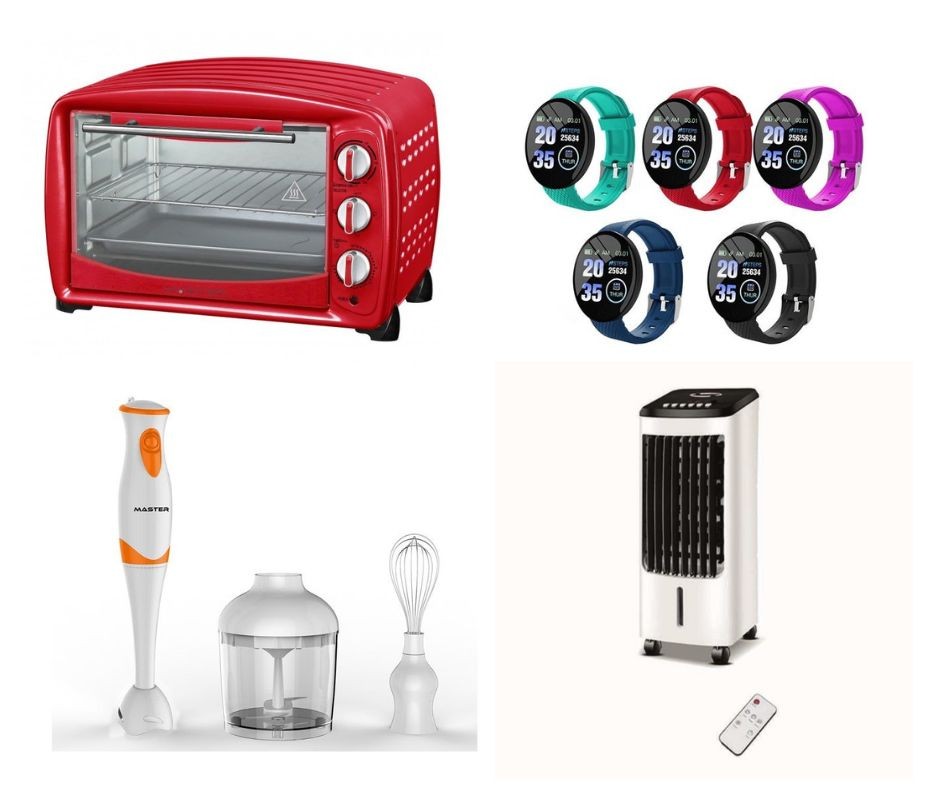The variety store industry, also known as general merchandise stores, is experiencing continuous growth due to its...

7 store trends of the future
Anywhere and anytime. A seamless shopping, fluid between online and offline, highly personalized and able to anticipate the needs of the increasingly hybrid and interconnected consumer. The world of retail wonders about what future awaits it in the coming years by looking for new market spaces in a complex scenario where the fixed costs of the physical point of sale are increasing, consumer habits have been distorted and e-commerce is not intending to stop its rise. The challenge for the retail trade is as simple as it is complex: understand how to be able to retain the consumer by creating an emotional and personal relationship starting from technological innovations such as big data, artificial intelligence and process automation to regain the leading role on the market. It is therefore not surprising that 95% of Italian merchants will continue to invest in digital transformation and 53% are optimistic about business growth for 2022 (source "Report Retail 2022" prepared by Adyen in collaboration with Kpmg):
“The role of customer engagement will assume an evergreater value, transforming itself into customer intimacy and will pass through digital touchpoints that integrate seamlessly between the physical and digital points of sale. In this new scenario, the use of platforms for the integration, aggregation and analysis of all data will be essential for retailers who want to evolve the relationship and converse with the consumer by creating a unique and personal shopping experience", he explains Francesco Soncini Sessa, Head of Strategic Alliances and co-Founder of Mia-Platform, an Italian tech company specialized in building platforms and applications that simplify and accelerate the delivery of new digital products and services.
"The future of shopping: technology everywhere", the impact of new technological solutions would be able to double the margins of retailers as well as making the approach with the new consumer.
If we consider the entire end-to-end chain (production, warehouse, sale, delivery and return) retail is probably the industry that collects the most data on consumer habits. A first challenge for retailers will be to build a business model suitable for the digital transformation by looking for new ways to get in touch with users who have changed their habits. In the United States it has already been renamed with the term “shopping promiscuity”. "The optimal shopping experience for the customer starts at home by browsing the website and ends inside the physical store - explains Francesco Soncini Sessa - New technologies support the integration of off and online channels thanks to digital services that facilitate the customer's customer journey.
In this sense, a customer experience attentive to the needs of the consumer can prove to be the key to customer loyalty. For retail companies it is essential to simplify and speed up data management (product, logistics, transactional and customer), maximizing integration and fast and secure exposure to internal and external systems of the company.
Here below 7 trends that could revolutionize the store of the future
1) DATA FUNDAMENTAL – In the traditional architecture of retail companies, data is fragmented into various systems and different local infrastructures. The innovation of "retail datafication" makes it possible to make the most of this enormous potential by aggregating all data: retailers are equipping themselves with cloud-based platforms that allow complete automation and their reuse for analyses, trends and studies.
2) CIRCULAR LOGISTICS – The construction of more sustainable supply chains has become a priority and it is necessary to build a circular logistics circuit that covers the entire life cycle of the product. From waste collection to packaging management, up to reducing the transport of goods: it will be essential to trace the flows of goods for better management and transparency of the entire supply chain.
3) MICRO-INFLUENCER STUDIOS – Shopping will accentuate its form of entertainment for consumers: it will therefore be possible to combine online and offline sales, transforming stores for a day into real studios for micro-influencers who offer visibility to products. A trend that could anticipate that of live shopping on social media, bringing the role of "commerce creators" to the fore.
4) INNOVATIVE PAYMENTS – The new cloud solutions allow the integration of payment flows directly with the company's ERP management system and the e-commerce store. This allows greater control over transactions, better data collection on consumer habits and the possibility of accepting different forms of payment and circuits such as instant bank transfers and virtual cards.
5) VERTICALIZATION – Temporary boutiques, pop up stores and mono-brand stores. Brands will take the personalization and verticalization of their stores ever higher, even with openings that can last a few days, such as during the last Milan Fashion Week, or for summer openings in holiday resorts.
6) CUSTOMER ENGAGEMENT TOUCHPOINT – Gartner predicts that by 2023, 40% of individual behaviors will be tracked through “Internet of Behavior” systems. For this reason, in the future the Customer Engagement Hub, the framework that connects all departments of the retail chain to involve the customer, will be implemented with cloud and data driven technologies to provide predictive analyzes and sales trends.
7) NEAR FIELD COMMUNICATION – This technology can be used in retail to provide customers with information on objects before the purchase while in the post-sales phase the retailer will understand how the user interacts with the object. Centralized technologies are emerging that can manage SmartTags directly from the store or headquarters to ensure information integrity.
Check our new projects, contacting us here














Leave a comment